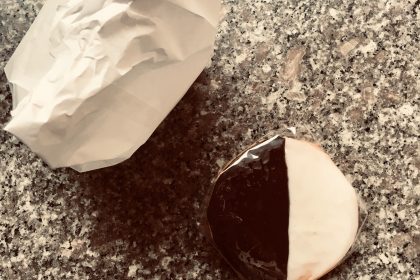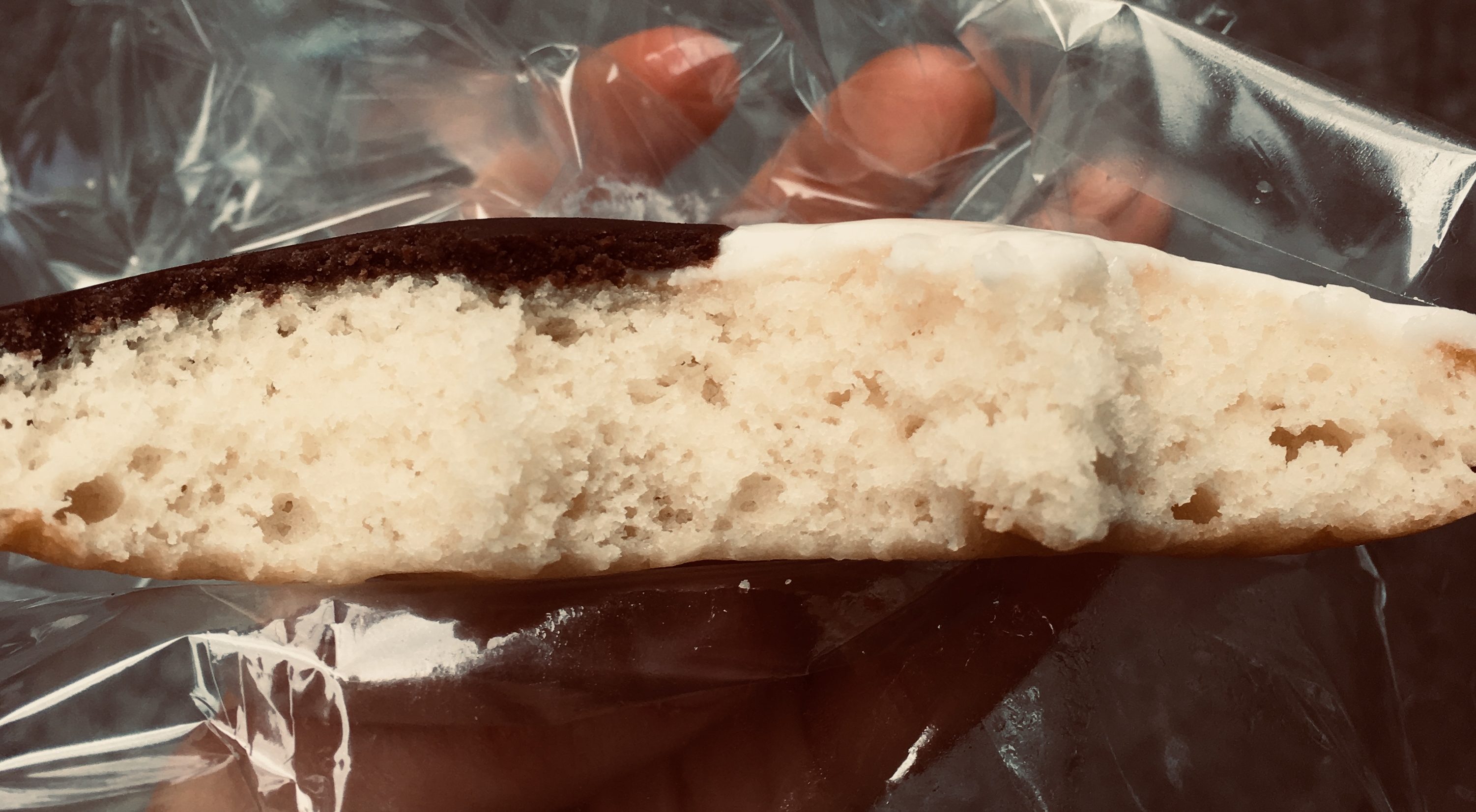When I have a free day in the city, I will usually be found on the outskirts of central park. Beginning in the upper west side, I’ll wander over to the Lincoln Center Library for the Performing Arts and do some work for a few hours in the energetic silence of the small, sleek artistic enclave. After getting some good work done I will amble down the steps leading towards the opera and make my way to central park to wander my way east amongst some trees. I always manage to end up in the east 70’s, and from there it is my mission to visit The Neue Gallery and drop off a little sweet treat for my friend. For what is better than giving a surprise baked good to a friend right at the peak of a work day lull? Not to mention being a great excuse for me to do some baked good explorations of my own.
On one of my final free days such as this, I was looking to make it as quintessentially New York as possible. And what baked good is more related to NYC than the black and white cookie? Why it is linked to the city I have no idea even after checking out a few articles that offered a little guidance, but no real reason for it’s long standing position as an iconic baked good. But the small, tea cake-like cookie can be found at many a bodega, bakery, and bagel shop throughout it’s many boroughs. Often you will find a fondant-like glaze covering the top creating the titular black and white panels, but some places like the now-closed Glaser’s famously covered the top of the cookie in black and white buttercream.
I have very little experience with this kind of cakey cookie, but it had a lot going for it in my mind. After all, it seemed like a well-proportioned, portable cake with two flavors to quell any indecisiveness. As long as all the elements are done right, I could easily see how this became the beloved cookie of the masses in a city of harsh critiques.
I did my research, looking for a bakery close to my whereabouts on either the east or west side of the park, and settled on William Greenberg. The bakery seemed to consistently pop up in black and white cookie conversation, and was conveniently close to my destination. And so my trek began!
The line was literally out the door when I arrived, which brought my hopes up. However, these hopes were somewhat mitigated when I saw the size of the interior. Enough room for a couple of people to stand comfortably, it was not equip to handle the solid handful of people that were coming through. This also meant that there was absolutely no space to hang inside and eat, which is a huge thing I look for in a bakeshop. This was clearly meant to be a grab and go situation.
As I continued to enter slowly but surely, I found another disappointing element. Every single item was wrapped in oodles of plastic. There was not a black and white cookie to be found (and there were many) that was not encased in plastic wrapping. I realized that this made sense for the grab-and-go feel of the place, but my environmentally conscious side was definitively not pleased. Let us put aside the fact that this could possibly crush the glaze and alter the eating experience of the cookie. There is no reason to use all of that wrapping. Not only that, but when I purchased my own, they put the wrapped cookies in another bag. Why not just put the cookie in the bag directly? Overall I was increasingly dubious that these could be the Great Black and White Cookie of the City.
I grabbed one for me and one for my friend and headed to the steps of The Met to give it a try to make sure it was a worthy gift. After struggling through the packaging and million little bits of tape, I finally reached the cookie with icing miraculously still intact. The cake was plush and fragrant, with its texture contrasting nicely with the stiff outer shell of fondant icing. Though I had to move quickly, for there was a warm rain coming in that was threatening to melt anything that met the air.
As an indecisive person, I naturally went for a bite of both black and white straight down the middle. The cake came at you with a solid vanilla, not too washed out as previously discussed is possible. But each bite was a perfectly pillowy bit of moist and floral cake. But the icing, however serviceable texturally, did not have as strong a punch to work in tandem with its base. In all aspects this seemed to be a creation about contrast: chocolate and vanilla, soft and hard. It is also rather simple in its elements. Therefore, every element must do it’s part with strength. But the chocolate of the black side seemed weak, and truthfully barely distinguishable from the white, whose vanilla was not as pleasing as that shown in the cake.
But perhaps this was because I tried both at the same time. Just as when I get a twist soft serve cone, it can often occur that the flavors blend together making them one, in my opinion muted, flavor. So I tried each side individually. And I tried them again. And again. Each time searching for something that I was missing. But is seemed that the aesthetic simplicity of the cookie had bled into the icing, where any potential for something to put it over the top had been lost. Which was disheartening for not only the usual reasons of always wanting to have a baked good of success, but because the cake was performing so admirably! But if a cake does not have the right icing working with it, a bit of it’s beauty is lost.
So while it was a perfectly tasty black and white cookie, it was not the paragon of this quintessential good of the city. And it certainly showed no reason for it’s pounds of plastic packaging. And so this week, after now investigating two places with this over-packaging problem, I ask us all to talk to our city’s bakers and find a reason, and possibly a way to cut it down.




